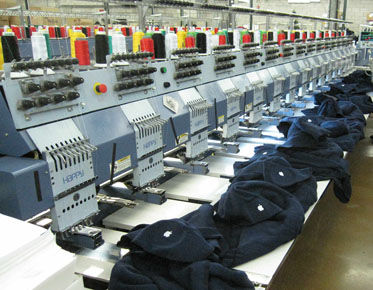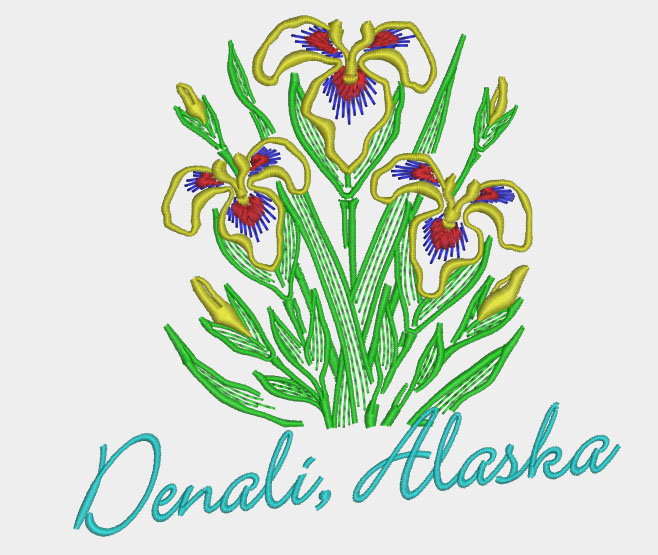How to Lower The Stitch Count of An Embroidery Digitizing Design
There are a number of ways to reduce the number of stitch counts in an embroidery digitizing design, depending on how flexible the user is with the graphic options, the type, the density, the use, and the degree to which they are willing to bend in order to reach their goals.
We've all had clients who give you a design
that, if you digitize it correctly, will have 10,000 stitches. However, they
insisted that it was only 5,000 stitches. You see, that's all about their
budget, but they still want top quality! Sound familiar? In this case, I would
tell the client, "Let me digitize it correctly so you know what it should
look like, and then I'll give you a second file that is processed by the
software with the number of stitches you want . When your client says it looks
like crap, use the first file I send you. The point is we need to be realistic!
If you remove too many pins, it will inevitably affect the appearance of your design. Here are some tips to help keep the needle count down in these awkward situations.
Reduce embroidery design stitches by editing digitization
Our first option is to use the stitch length and value of the pad and running stitches. You can then adjust the density value of the column stitches as well as the density and stitch length of the filled areas. The trick is to play around with values large enough to change the number of pins without significantly affecting the visual integrity of the design.
In some cases, you can further reduce the stitch count by converting some of the fill stitch objects to satin stitches. This can be a little misleading at times, because if the stitch length of the column is too long, the machine will automatically slow down and you won't really save much time at the production level.
Reduce embroidery design stitches by editing artwork
Second, you can alter the client's artwork in some way to try and meet the desired number of stitches. However, these changes often affect the quality of what one might consider good embroidery. Some of these changes might include not placing borders around filled areas, using walk stitches around objects instead of column borders, and simplifying or removing details from client art. These changes are usually not repeated, so please approve any changes in writing. The above is one of the fees you pay.
Reduce embroidery design stitches by adding appliqués
In contrast to digitizers, this recommendation is directly related to production. Usually, when you're on the floor and you mention the word "decal," you get an immediate cold shoulder. To do it right, the traditional decal process has a lot of cutting, lining and excessive downtime on the machine. I've been lucky enough to be producing and being a digitizer at the same time, and when I feel like I can get away with it, I'm able to experiment with the unorthodox method of decals.
What we do is very simple. We would use
certain materials (colored plastic, tear-away steel tubing) as a base, and on
top of that, we would digitize and stitch very loose padding.
This is not a difficult process and can be
performed quickly at production level. There are several criteria for
determining whether the job in question is a good candidate for this technique;
is there a large enough padding area to make it worthwhile? Does the quantity
of the order warrant specific programming, and given the appliqué material
used, does the embroidered item fit the type of application?
We often use this technique on items that don't wash after each use, such as jackets and hats. You can also successfully handle your washable items if you take the time to source the proper materials. It's just a matter of taking the time to experiment.
Reduce Needle Count for Embroidery Designs
with Pattern Fill Automatic Fabric Assist
The best way to reduce the stitch count of
your designs when digitizing is to
make sure you save and edit your designs in their native format. The native
format in each software program will save the original nodes and attributes
used to create the embroidery file, and it is "object-based", not
just converted stitches. This is important because if you both own the original
file and have access to its digitizer, you can adjust all properties in the
file. These will include density, tension compensation and padding used...all
of which should be changed for the specific project and fabric type.
Use these techniques to reduce your embroidery stitch count
If you need to reduce the number of stitches in your design, be sure to use one of the suggestions below to ensure your embroidery designs are still of high quality!
Edit digitization by adjusting underlays,
density, and other basic theories
Edit artwork (such as removing borders and
using simpler stitches)
Add decals and use very loose padding
Using the Hatch Automatic Fabric Aid



